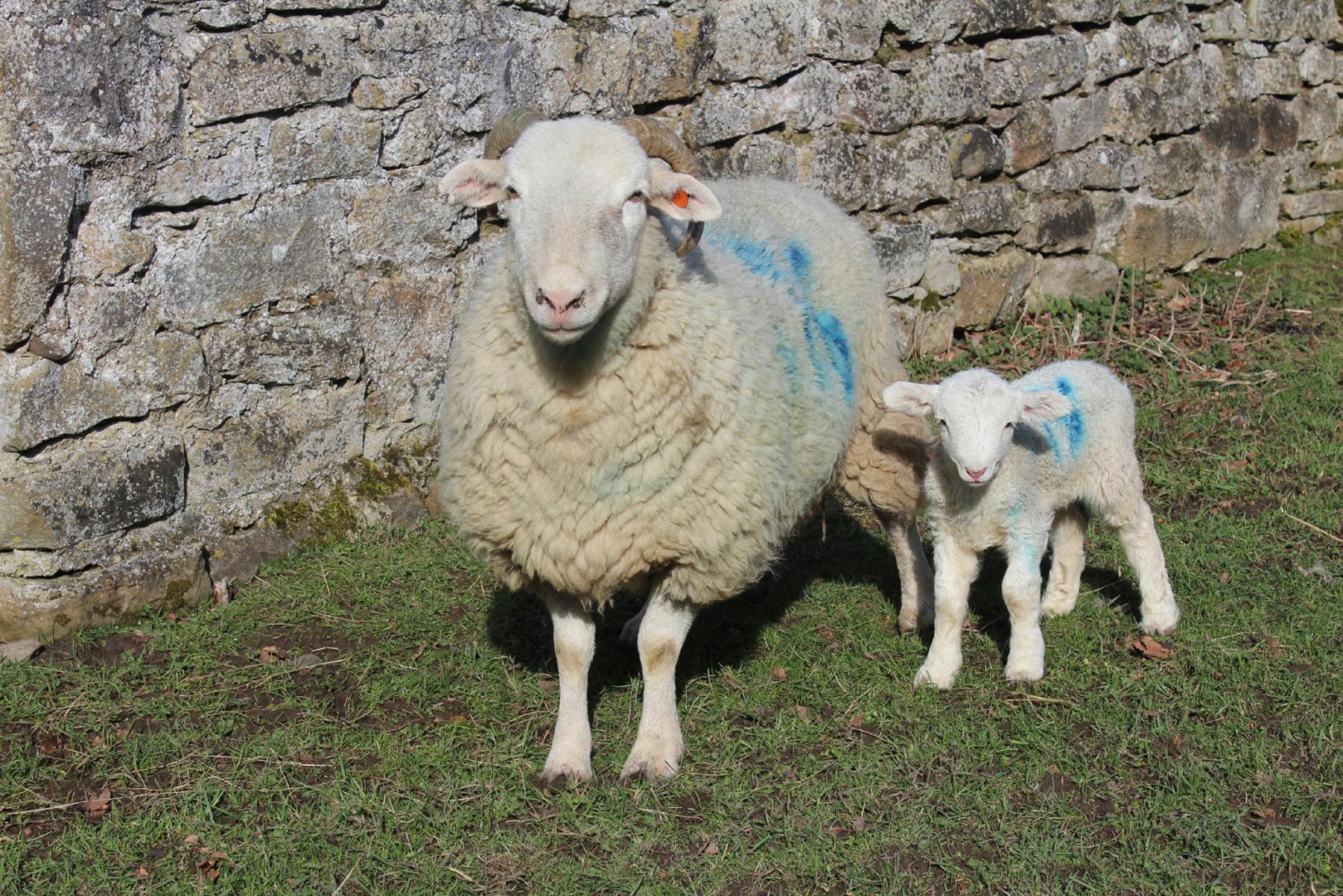The White-faced Woodland cuts a striking figure in the Teesdale landscape, grazing as it does high on the hills above Bowes. However, its handsome features are not the breed’s only positive attribute, as flock keeper Rachel Godschalk explains to Wendy Short.
SOME 170 pedigree White-faced Woodlands graze at up to 1,000 feet above sea-level at Plover Hall farm, which Rachel Godschalk manages in partnership with her parents, Ann and Geoff.
Investment in a Sum-It recording system has helped to bring about significant genetic advancement within the “Mortham” pedigree flock and like all other livestock breeders Ms Godschalk is always striving for perfection.
“We are seeing a steady rise in the quality of our sheep, but there is always room for improvement,” she says. “Our goal is to breed a ewe with very straight legs and good feet; two qualities which are of prime importance, as they form the basis of a sound structure.
“The White-faced Woodland should also have correct pasterns, with plenty of bone and a tight skin. It is a fairly large hill breed, with ewes generally weighing about 70kgs and tups 90kgs-plus. The ewes possess excellent mothering ability and will usually take on an orphan lamb without fuss.”
She adds: “It is also a very kind-natured sheep; neither pushy, not timid. This makes it easy to handle and we have never had a tup with a poor temperament.
“A White-faced Woodland ewe will produce four to five crops of lambs on average and her large frame gives her a high cull value when she reaches the end of her productive lifetime.”
During the summer, the Mortham flock is grazed on the 120-acre home farm in Gilmonby, but the ewes are lambed on a block of rented ground at Greta Bridge.
“The ewes were in good condition as lambing approached, but the persistent bad weather pulled them down and they were not as fit as we would have liked,” admits Ms Godschalk.
“Next year, we plan to put out fodder beet a few weeks earlier, mainly to try and maintain energy levels.”
A cross-breeding programme was introduced at Plover Hall three years ago, with the aim of increasing lamb numbers. Keen to support local breeds, she chose the Wensleydale and the Teeswater for the crossing programme and these have proved to be an ideal match for the White-faced Woodland.
Historically, the Texel has been used as a terminal sire on the Masham Mules, however, during the past couple of years the family has switched to the South Down. These tups have produced lambs which are thrifty and finish well off grass, due to the high fat EBVs of the South Down.
Pregnant ewes are scanned annually and separated into groups according to lamb numbers, with a figure of 153 per cent for the purebreds this season, while the crossbred flock averaged just over 186 per cent.
Lambing takes places from mid-March and the lambs weaned at the end of July. Finished animals, weighing about 42kgs, are sent to the local auction marts from weaning onward.
Despite enduring one of the most difficult lambing periods for many years, due the unfavourable weather, Ms Godschalk remains upbeat about the prospects for her flock of 170 White-faced Woodland ewes this year.
She has a couple of “cracking” lambs to put forward for this year’s Great Yorkshire Show and the breed has fulfilled its reputation for hardiness by making it through the harsh winter relatively unscathed.
The flock has been placed at the Great Yorkshire on several occasions, as well as winning prizes at the local shows which the family supports each year. Nevertheless, the main aim for all White-faced Woodland flock owners is a placing at a one of the shows held in the breed’s native county of Derbyshire, where it can be spotted in large numbers by anyone driving through the Snake Pass and around the Glossop area. The highlight of the year for pedigree White-faced Woodland breeders is Hope Show, in Derbyshire, which is held on August Bank Holiday Monday.
“We hold our champion of champions competition at Hope,” explains Ms Godschalk. “All of the season’s show winners and reserve prize winners are eligible to compete and it is very exciting. We may not live in Hope, but we certainly live in hope that we will achieve success with our sheep at its local show at some point in the future.”
Rachel is currently dividing her time between the farm and her home village of Ashwell, in Hertfordshire.
After qualifying for the Bar, she is currently seeking the offer of a pupillage, which will take her on to the next stage in her career as a barrister.






